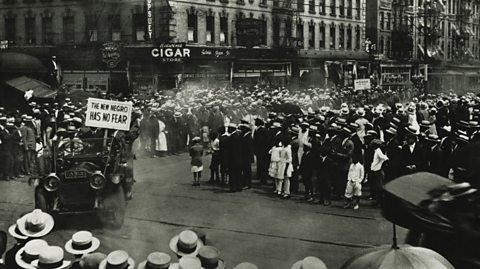Reasons for rapid economic growth in the 1920s
The 1920s was a period of rapid change and economic prosperityBecoming well-off, or wealthy. in the USA.
Life improved for the majority, but not all, of Americans.
The USA had become a huge industrial nation even before the 1920s.
This was because it had large supplies of natural resources such as timber, iron, coal, minerals, oil and land.
However, there were additional factors which led to the economic boomA period when the economy expands and grows. in the 1920s.
Technological and scientific advances
Technological advances led to both the development of new industries and an increase in productivityThe output of employees over a specific period of time. in existing ones.
Widespread electrification provided the cheap energy that factories needed to thrive.
The 1920s also saw the introduction of mass production techniques that allowed goods to be produced more cheaply and more quickly.
Scientific progress also transformed the economy.
The USAÔÇÖs chemical industry led the world in providing fertilisers and dyes, as well as introducing new materials like BakeliteA type of hard, brittle plastic used in the production of a range of goods during first half of the 20th century. and rayonA soft artificial fabric which resembles silk. that had a wide range of uses, and led to cheaper products.
A nation of consumers
Increased employment meant that Americans had more money to spend.
Mass marketing techniques and the availability of cheap creditWhen a good is received but not paid for until later. created a nation of consumerAn individual who purchases goods or services..
The Republican Presidents during the 1920s (Warren Harding, Calvin Coolidge and Herbert Hoover) were pro-business and their policies aimed to help this sector of the economy.
These policies were successful for almost a decade.
Confidence in the economic boom amongst Americans was very high, which meant they were prepared to buy goods, try new ideas and invest in companies.
Mass production and its impact on peopleÔÇÖs lives
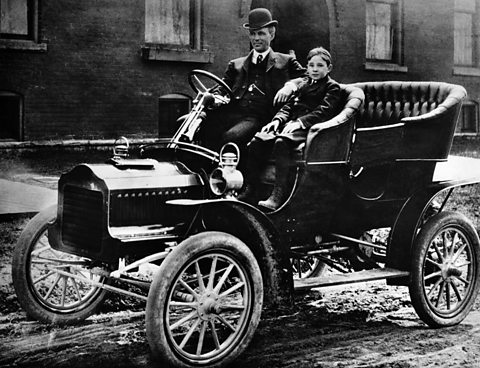
The car manufacturer, Henry Ford, pioneered the assembly lineA series of workers and machines in a factory by which a succession of similar items is progressively assembled. technique.
This used multiple machines and conveyor belts.
Workers only needed to perform a few specific tasks.
This resulted in mass production, meaning that goods could be produced more quickly and in greater quantities.
The new machines did not require a high level of skill to operate them, so factories were able to employ large numbers of unskilled workers.
This led to both lower prices for goods and to more employment.
Together, cheaper, mass-produced products and increased employment stimulated further demand for goods.

The availability of credit and mass marketing
Credit boom
In the 1920s, many companies needed additional money to extend their businesses.
They often raised finance by selling sharesA percentage of a business owned by a shareholder. on the stock marketA centralised market where business shares are traded.
By the mid-1920s, ordinary people frequently bought the shares on the marginA process where people borrow money in order to be able to buy shares., by paying about 10 per cent of their value directly from their savings and borrowing the rest from one of the thousands of small, unregulated banks which existed.
creditWhen a good is received but not paid for until later. firms also emerged that arranged for consumers to pay for goods in instalments at low interest rates The amount an individual is charged for borrowing money. The rate is an annual percentage of the loan. and this was called hire purchase.
This led to an increased demand for goods because the majority of Americans could now buy expensive items that they previously couldnÔÇÖt afford to pay for, such as cars.
However, this also meant that many Americans were living with debts to pay off.
Advertising
There was also a change in how goods were marketed.
A big advertising industry grew up to promote the vast range of consumer goods.
Advertisements were sophisticated, colourful and full of catchphrases.
Adverts were often placed on the roadsides, in newspapers, cinema and the radio.
Cinema and radio personalities were often paid to help sell products and most radio shows had a ÔÇÿcompany sponsorÔÇÖ.
Catalogue and chain stores
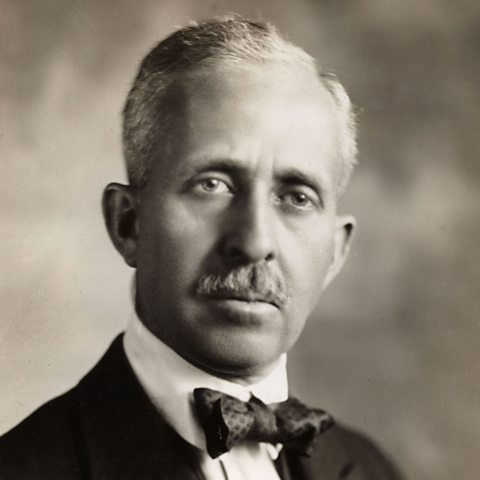
During the 1920s, catalogue shopping became a convenient way of buying goods.
The most famous mail order company was Sears, Roebuck and Co. and by 1928, one-third of Americans bought goods from it.
Chain stores opened across the country, making consumer goods readily available even in remote areas.
J C Penney, who had a few hundred stores in 1920, expanded his empire dramatically.
He opened his 500th store in 1924 and by the end of the decade, he had 1,000.
Policies of the Republican Presidents

The USA was led by three Republican Presidents during the 1920s.
They were:
- Warren Harding (1921-1923)
- Calvin Coolidge (1923-1929)
- Herbert Hoover (1929-1933)
All three Presidents had quite similar policies and were very pro-business.
In fact, Coolidge had claimed that ÔÇ£the business of America is businessÔÇØ.

Laissez-faire

The Republican Presidents believed the government should interfere in the economy as little as possible so big businesses could expand without being held back by the government.
They feared too much interference would upset the natural operation of the economy.
In practice this meant not putting too many laws and regulations in place.
Banks and the stock market were left unregulated.
This approach was known as laissez-faireA government policy of leaving something alone to sort itself out. 'Laissez- faire' is French for 'leave alone'..
Protectionism

The Republican Presidents thought it would be good for the economy if consumers bought American-made products rather than those from other countries.
To encourage people to do this they imposed taxes called tariffs on foreign goods, making them more expensive than American goods.
They were, therefore, ÔÇÿp░¨┤Ã│┘▒│ª│┘¥▒▓È▓ÁÔÇÖ American factories.
The Fordney-McCumber Tariff Act 1922 imposed high tariffs of 400% on foreign made items.
This was just one example of what was known as protectionism.

Reduced taxation
Tax levels had risen dramatically towards the end of World War One.
Harding promised a ÔÇ£return to normalcyÔÇØ (normality) and there were large tax cuts for businesses.
They could now choose to reinvest that money in their business.
There were smaller tax cuts for individuals.
Weakening of trade unions
Trade unions are organisations that protect workers' rights.
They can cost businesses money by pressuring them into giving the workers better pay and working conditions.
The government and the courts allowed businesses to forbid their workers from joining unions.
They also broke strikes by force.
Trusts and cartels
The government allowed the development of cartels whereby large corporations that were in the same business, e.g. energy, could fix the prices of the goods they supplied at a high rate.
Industry
The car industry
The car industry was revolutionised by mass production and the three big car manufacturers were Ford, Chrysler and General Motors.
They were major employers (7.1 per cent of all factory workers) and accounted for 12.7 per cent of revenue.
Wages were also good with Ford workers earning $5 per day.
The advances in technology meant goods were produced in huge numbers and therefore more cheaply.
For example, the price of cars dropped from $940 in 1920 to $290 in 1929.
By that stage, 23 million Americans owned cars.
This was approximately one in six of the population.
The car industry was central to the entire 1920s boom as the resources that it used stimulated other parts of the economy such as steel, rubber, oil, energy, leather and road building.
The chemical industry
Scientific advances led to the development of new materials that were a lot cheaper to produce than natural materials.
For example, rayonA soft artificial fabric which resembles silk. was a syntheticA synthetic substance is one made by chemical reactions rather than by nature. fibre that looked like silk but cost a lot less.
A new substance called BakeliteA type of hard, brittle plastic used in the production of a range of goods during first half of the 20th century. was invented.
This was an early plastic that could be used in a wide range of goods.
The 1920s was also the decade that saw the cosmetics industry boom as American women bought the products worn and marketed by their favourite movie stars.
The chemical industry was responsible for the development of these products.
Large chemical producers such as DuPont, Dow Chemical and Monsanto earned millions of dollars and became essential to the American economy.
The construction industry
The construction of buildings is an important part of a booming economy.
It provides jobs and brings growth to the materials industries that supply it, such as steel and concrete.
It is also a sign that businesses want and can afford new modern buildings.
If anything defined the construction industry in the USA in 1920s, it was the appearance of huge skyscraper buildings in the major cities.
Nowhere was this more apparent than New York with its towering Manhattan skyline.
The Empire State Building was completed in 1931 and at the time was the tallest building in the world.
These skyscrapers were a visible sign of the confidence that Americans had in their country and its economy.
Consumer goods
The 1920s saw the development of consumer goods.
These were usually items that made household work easier such as vacuum cleaners, refrigerators and washing machines.
Cheap creditWhen a good is received but not paid for until later. helped people to purchase these goods and most of the goods were powered by electricity.
This helped create the economic boom because it supplied the power needed in the homes of consumers for the new mass-produced products.
As more people were buying these goods, demand increased, which meant more success for the factories that were producing them.
The impact of the Roaring Twenties
Positive
- There was significant economic growth. Gross National Product (GNP)Total value of all the goods and services produced in a country in a year along with income from abroad. It is one way of measuring the wealth of a country. increased from $78 billion to $103 billion.
- There was increased individual wealth.
- Consumers had access to a wider range of goods.
- The construction industry and car boom transformed American cities.
- Unemployment dropped from 11.9 million in 1921 to 3.2 million in 1929.
- Mass production made goods cheaper for consumers.
- Car ownership greatly increased.
- There were greater opportunities for women.
- By 1929, 25% of women were employed.
Negative
- trade unionAn organisation whose main purpose is to represent the interests of workers in a specific type of business or industry. were weakened and so workersÔÇÖ rights were unprotected.
- More than 60% of Americans still lived below the poverty line.
- Women and minorities continued to be exploited and lowly paid.
- Cheap credit meant that many Americans had a high level of debt and were living beyond their means.
- Policies such as protectionismProtectionism is the process of protecting domestic industries by adding tariffs or taxes onto imports. would lead to long term economic problems.
- The government were getting less back in taxes so cut spending in many areas.
Quiz: Find the correct image
Test your knowledge
More on Life in the United States of America, 1920-33
Find out more by working through a topic
- count7 of 9
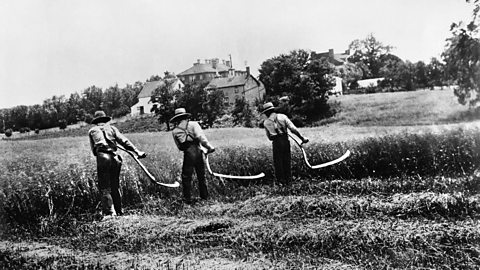
- count8 of 9
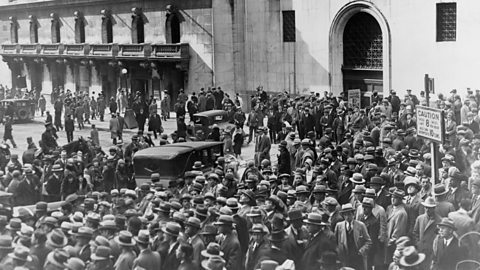
- count9 of 9
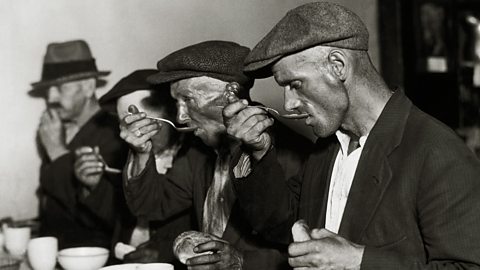
- count1 of 9
